COMSOL Events Calendar
Modeling Workflow
Electromagnetics
Structural & Acoustics
Fluid & Heat
Chemical
Interfacing
General
Show as:
Time zone:
My Time (EST)
Host Time
08:00 AM - 08:00 PM
Showing events starting between: 8 a.m. – 8 p.m.
Search
Upcoming Events
Loading Events
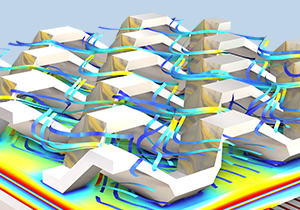
Jan 7
| 8:00 a.m. CET
Solving Large Models in COMSOL Multiphysics®
COMSOL
Webinar
Online

Jan 9
| 11:00 a.m. EST
COMSOL Day: Version 6.3
COMSOL
COMSOL Day
Online

Jan 10
| 8:30 a.m. CET
Tutte le novità di COMSOL Multiphysics® 6.3
COMSOL
Webinar
Online
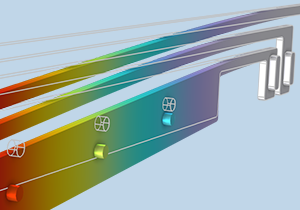
Jan 14–17
| 11:00 a.m. EST
Introduction to COMSOL Multiphysics®
COMSOL
Training Course
Online

Jan 14
| 11:30 a.m. EST
The Basics of COMSOL Multiphysics® in 18 Minutes
COMSOL
Webinar
Online
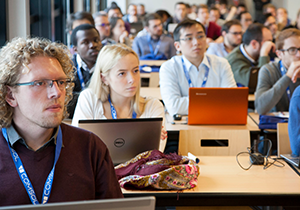
Jan 19
| 8:00 p.m. JST
18分間ウェビナー COMSOL Multiphysics® の基礎
COMSOL
Training Course
Online
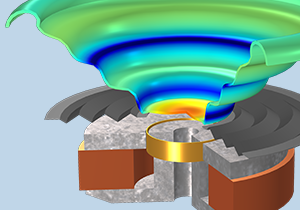
Jan 21
| 8:00 a.m. GMT
Introduction to Acoustics Modeling
COMSOL
Webinar
Online
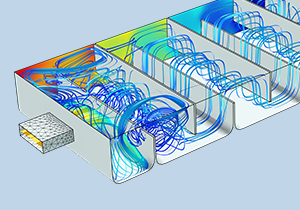
Jan 21–24
| 11:00 a.m. EST
CFD Modeling in COMSOL Multiphysics®
COMSOL
Training Course
Online

Jan 21
| 11:00 a.m. EST
Electric Discharge Modeling
COMSOL
Webinar
Online
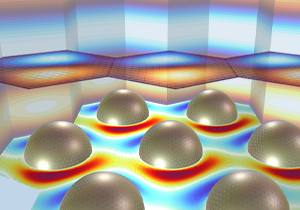
Jan 23
| 2:00 p.m. EST
Modeling Optical Nanostructures with COMSOL Multiphysics®
Laser Focus World
Webinar
Online
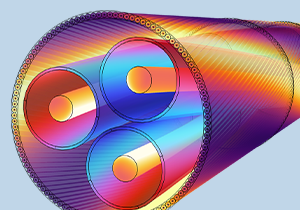
Jan 28–31
| 11:00 a.m. EST
Structural Mechanics Modeling in COMSOL Multiphysics®
COMSOL
Training Course
Online
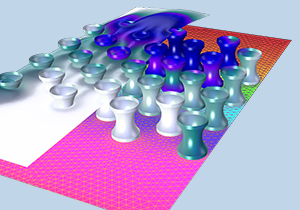
Jan 29
| 9:00 a.m. GMT
Modeling Biochemical Sensors and Testing Devices with COMSOL®
COMSOL
Webinar
Online
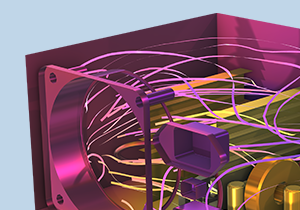
Jan 30
| 8:30 a.m. CET
Simulare il comportamento termico di dispositivi e processi
COMSOL
Webinar
Online
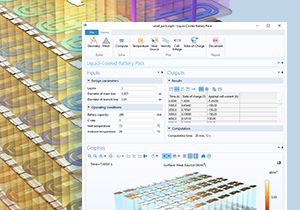
Feb 4
| 8:00 a.m. CET
Simulation Apps & Digital Twins for the Renewable Energy Industry
COMSOL
Webinar
Online

Feb 11
| 8:30 a.m. CET
Innovare le tecnologie dell'idrogeno con la simulazione
COMSOL
Webinar
Online
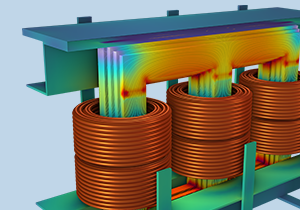
Feb 11–14
| 11:00 a.m. EST
AC/DC Modeling in COMSOL Multiphysics®
COMSOL
Training Course
Online

Feb 13
| 2:00 p.m. EST
Modeling Electric Discharges
IEEE Spectrum
Webinar
Online

Feb 18
| 8:00 a.m. CET
Electric Discharge Modeling
COMSOL
Webinar
Online

Mar 4
| 8:00 a.m. CET
Heat Transfer Modeling with COMSOL® in 18 Minutes
COMSOL
Webinar
Online

Mar 4–7
| 11:00 a.m. EST
Introduction to COMSOL Multiphysics®
COMSOL
Training Course
Online
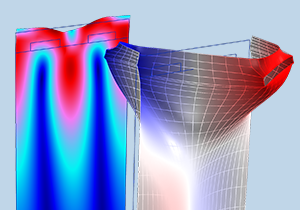
Mar 11–14
| 11:00 a.m. EST
RF Modeling in COMSOL Multiphysics®
COMSOL
Training Course
Online

Mar 18
| 9:00 a.m. GMT
CFD Modeling with COMSOL® in 18 Minutes
COMSOL
Webinar
Online
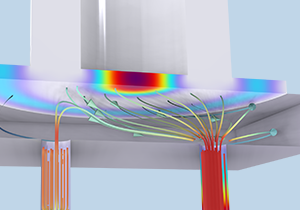
Mar 25–28
| 11:00 a.m. EST
Heat Transfer Modeling in COMSOL Multiphysics®
COMSOL
Training Course
Online
Showing 8 of 23 events
Showing 23 of 23 events
| Date | Time | Title | Type | Host | Discipline |
|---|---|---|---|---|---|
| Jan 7 | 8:00 a.m. |
Solving Large Models in COMSOL Multiphysics® |
Webinar | COMSOL-Online |
|
| Jan 9 | 11:00 a.m. |
COMSOL Day: Version 6.3 |
COMSOL Day | COMSOL-Online |
|
| Jan 10 | 8:30 a.m. |
Tutte le novità di COMSOL Multiphysics® 6.3 |
Webinar | COMSOL-Online |
|
| Jan 14–17 | 11:00 a.m. |
Introduction to COMSOL Multiphysics® |
Training Course | COMSOL-Online |
|
| Jan 14 | 11:30 a.m. |
The Basics of COMSOL Multiphysics® in 18 Minutes |
Webinar | COMSOL-Online |
|
| Jan 19 | 8:00 p.m. |
18分間ウェビナー COMSOL Multiphysics® の基礎 |
Training Course | COMSOL-Online |
|
| Jan 21 | 8:00 a.m. |
Introduction to Acoustics Modeling |
Webinar | COMSOL-Online |
|
| Jan 21–24 | 11:00 a.m. |
CFD Modeling in COMSOL Multiphysics® |
Training Course | COMSOL-Online |
|
| Jan 21 | 11:00 a.m. |
Electric Discharge Modeling |
Webinar | COMSOL-Online |
|
| Jan 23 | 2:00 p.m. |
Modeling Optical Nanostructures with COMSOL Multiphysics® |
Webinar | Laser Focus World - Online |
|
| Jan 28–31 | 11:00 a.m. |
Structural Mechanics Modeling in COMSOL Multiphysics® |
Training Course | COMSOL-Online |
|
| Jan 29 | 9:00 a.m. |
Modeling Biochemical Sensors and Testing Devices with COMSOL® |
Webinar | COMSOL-Online |
|
| Jan 30 | 8:30 a.m. |
Simulare il comportamento termico di dispositivi e processi |
Webinar | COMSOL-Online |
|
| Feb 4 | 8:00 a.m. |
Simulation Apps & Digital Twins for the Renewable Energy Industry |
Webinar | COMSOL-Online |
|
| Feb 11 | 8:30 a.m. |
Innovare le tecnologie dell'idrogeno con la simulazione |
Webinar | COMSOL-Online |
|
| Feb 11–14 | 11:00 a.m. |
AC/DC Modeling in COMSOL Multiphysics® |
Training Course | COMSOL-Online |
|
| Feb 13 | 2:00 p.m. |
Modeling Electric Discharges |
Webinar | IEEE Spectrum - Online |
|
| Feb 18 | 8:00 a.m. |
Electric Discharge Modeling |
Webinar | COMSOL-Online |
|
| Mar 4 | 8:00 a.m. |
Heat Transfer Modeling with COMSOL® in 18 Minutes |
Webinar | COMSOL-Online |
|
| Mar 4–7 | 11:00 a.m. |
Introduction to COMSOL Multiphysics® |
Training Course | COMSOL-Online |
|
| Mar 11–14 | 11:00 a.m. |
RF Modeling in COMSOL Multiphysics® |
Training Course | COMSOL-Online |
|
| Mar 18 | 9:00 a.m. |
CFD Modeling with COMSOL® in 18 Minutes |
Webinar | COMSOL-Online |
|
| Mar 25–28 | 11:00 a.m. |
Heat Transfer Modeling in COMSOL Multiphysics® |
Training Course | COMSOL-Online |
|
Trainings by Certified Consultants
On-Demand Webinars
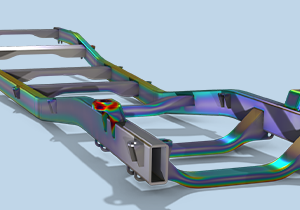
COMSOL® 中的结构力学仿真
Webinar
Dec 19

Multiphysics Fracture Mechanics with COMSOL Multiphysics® in 18 minutes
Webinar
Dec 12

COMSOL® 中的传热仿真
Webinar
Dec 12
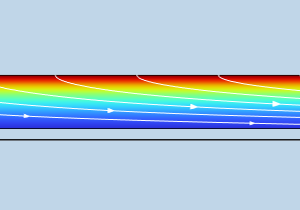
Models for Transport and Chemistry in CVD Reactors
Webinar
Dec 05
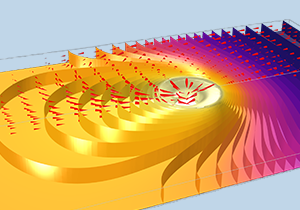
Modéliser les Procédés de Fabrication avec COMSOL Multiphysics®
Webinar
Dec 05
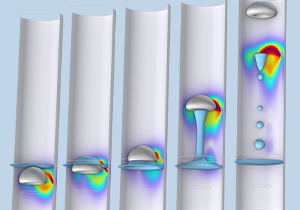
COMSOL® 中的多相流仿真
Webinar
Dec 05

Simulazione elettromagnetica di circuiti stampati (PCB)
Webinar
Dec 04

COMSOL Multiphysics® 6.3 版本功能简介
Webinar
Nov 28
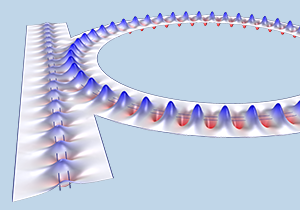
Modeling Nanophotonic Applications with COMSOL Multiphysics®
Webinar
Nov 28

Simulation für alle durch eigenständige Simulations-Apps
Webinar
Nov 27
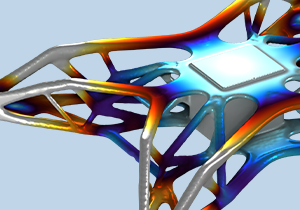
Design Optimisation for Engineering Problems
Webinar
Nov 27
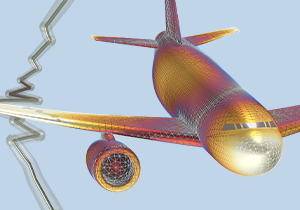
Modélisation Multiphysique pour l’Aéronautique et le Spatial avec COMSOL Multiphysics®
Webinar
Nov 21
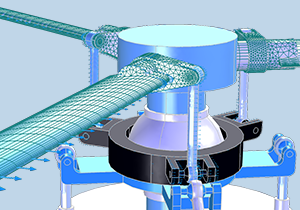
COMSOL® 中的转子动力学和多体动力学仿真
Webinar
Nov 21

Modeling Shape Memory Alloys and Triboelectric Nanogenerators with COMSOL Multiphysics®
Webinar
Nov 21
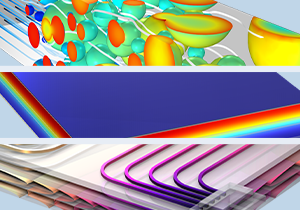
Progettare batterie all'avanguardia con la simulazione
Webinar
Nov 20

Introducing COMSOL Multiphysics® Version 6.3
Webinar
Nov 20
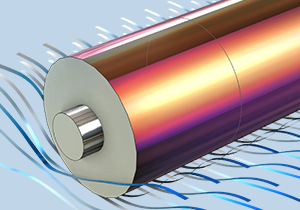
Improving Thermal Management of Batteries with COMSOL Multiphysics®
Webinar
Nov 19
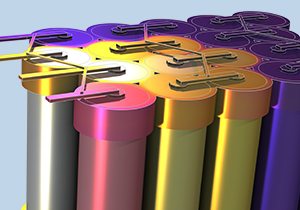
Battery Modeling with COMSOL Multiphysics®
Webinar
Nov 14
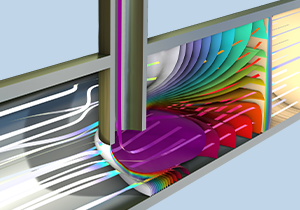
Modéliser les Milieux Poreux avec COMSOL Multiphysics®
Webinar
Nov 14

COMSOL® 求解器介绍及设置方法
Webinar
Nov 14

Modeling Cables & Power Electronics
Webinar
Nov 13

Improving the Manufacturing of Semiconductors with Multiphysics Simulation
Webinar
Nov 07
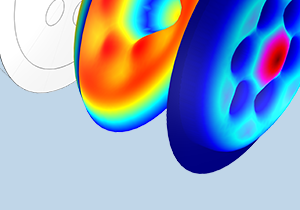
使用 COMSOL Multiphysics® 模拟声学超材料
Webinar
Nov 07
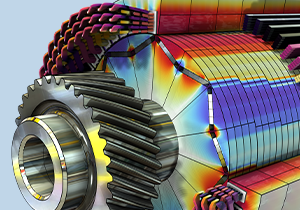
Advancements in Simulation for EV Motors
Webinar
Nov 06

Multiphysics Modeling of Electrical Motors
Webinar
Oct 31
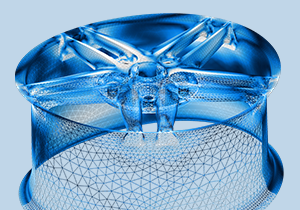
多物理场仿真结果的处理与可视化
Webinar
Oct 24

Modelling the Thermomechanical Behaviour of Glass Materials
Webinar
Oct 23

Fatigue and Durability Analysis using COMSOL Multiphysics®
Webinar
Oct 23

Multiphysics Modeling of Manufacturing Processes Using COMSOL®
Webinar
Oct 17

Déployer les Bénéfices de la Simulation à l’aide d’Applications Autonomes
Webinar
Oct 17
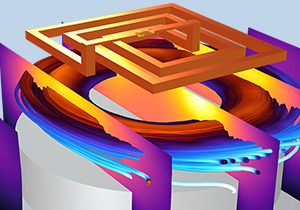
COMSOL® 中的等离子体仿真
Webinar
Oct 17

Simulating Electromagnetic Metamaterials in COMSOL Multiphysics®
Webinar
Oct 15

Modeling Thermal Runaway and Abuse in Batteries
Webinar
Oct 15
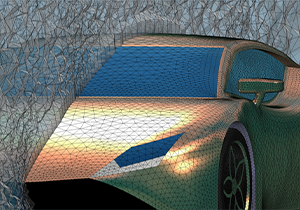
COMSOL® 网格划分功能介绍
Webinar
Oct 10

Modeling Reaction Kinetics and Pharmacokinetics with COMSOL®
Webinar
Oct 02

Simulating Electronics Packaging and Testing
Webinar
Sep 26

Electromagnetics Simulation of Printed Circuit Boards in COMSOL Multiphysics®
Webinar
Sep 26

Simulating Droplet Flow in Wearable Sweat Collection Patches
Webinar
Sep 25
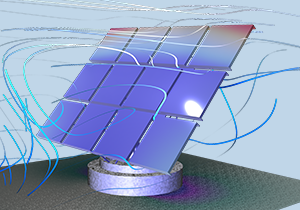
Progettare tecnologie per l'energia solare
Webinar
Sep 24

Designing Electric Motors and Drivetrains with Multiphysics Simulation
Webinar
Sep 20
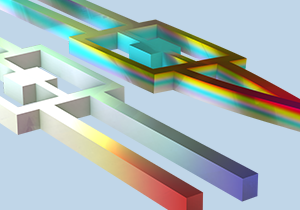
Modeling and Simulation of MEMS Devices
Webinar
Sep 19

电力变压器的多物理场仿真
Webinar
Sep 19
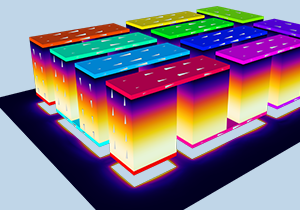
Equation-Based Modeling with COMSOL Multiphysics®
Webinar
Sep 18

Thermal Management in Electronic Devices with COMSOL Multiphysics®
Webinar
Sep 18

Battery Modeling with COMSOL Multiphysics®
Webinar
Sep 17

Simulation Multiphysique, Modèle de Substitution et Jumeaux Numériques
Webinar
Sep 17
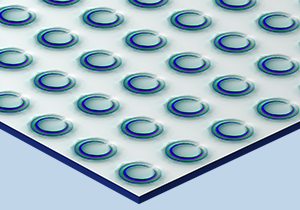
Simulating Plasmonics and Metamaterials
Webinar
Sep 12

使用 COMSOL Multiphysics® 仿真高性能电机
Webinar
Sep 12

Risolvere modelli di grandi dimensioni con COMSOL Multiphysics®
Webinar
Sep 11
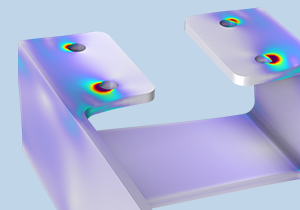
不确定性量化在多物理场仿真中的应用
Webinar
Sep 05

Using Modeling and Simulation for Innovation in Medtech
Webinar
Sep 04
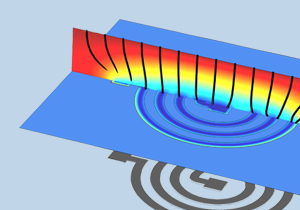
Modeling and Simulation of Electrodeposition Cells
Webinar
Aug 29
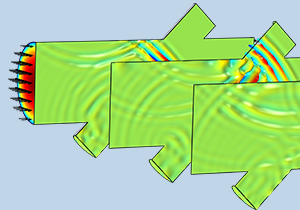
超声波及其应用的多物理场仿真
Webinar
Aug 29

Designing Batteries with Modeling and Simulation
Webinar
Aug 28
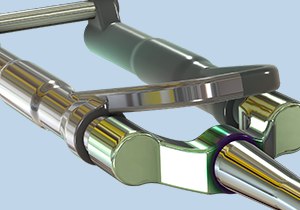
Materialparameter abschätzen
Webinar
Aug 28

Introducción a COMSOL Multiphysics® en 18 Minutos
Webinar
Aug 27
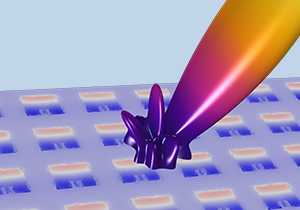
Multiphysics Modeling and Simulation for 5G Devices
Webinar
Aug 27
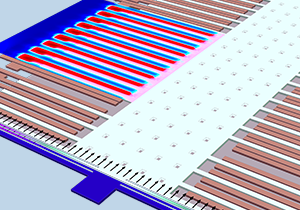
Modeling Low-Frequency Accelerometers Using COMSOL Multiphysics®
Webinar
Aug 22

Modeling Hydrogen Production, Storage and Utilization
Webinar
Aug 21

The Basics of COMSOL Multiphysics® in 18 Minutes
Webinar
Aug 20

Modeling Electric Motors and Drivetrains
Webinar
Aug 20
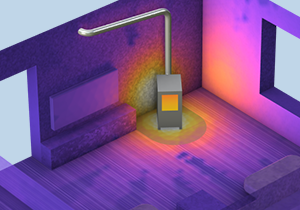
Thermal Health Monitoring for the Built Environment: Accelerating Product Development with COMSOL
Webinar
Aug 15
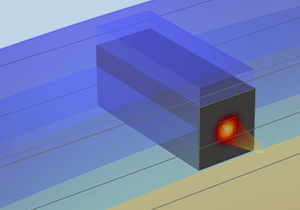
使用 COMSOL Multiphysics® 模拟光电半导体
Webinar
Aug 15

Phased Array Antenna Modeling with COMSOL Multiphysics®
Webinar
Aug 13
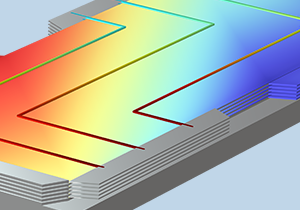
Virtual Hydrogen Lab: Computational Predictions of Hydrogen Uptake, Diffusion, and Embrittlement
Webinar
Aug 08
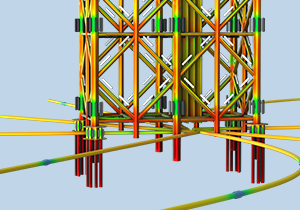
COMSOL® 多物理场仿真加速数字岩心技术发展
Webinar
Aug 08
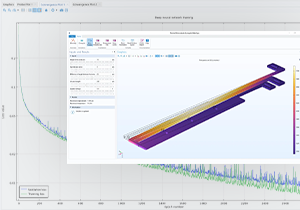
使用代理模型开发高效的 COMSOL® 仿真 App
Webinar
Aug 01

Modeling Fluid-Structure Interaction with COMSOL Multiphysics®
Webinar
Jul 30
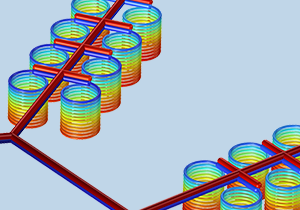
Multiphysics Simulation to Improve Design of Renewable Energy Production
Webinar
Jul 25
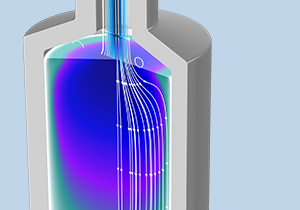
COMSOL® 多物理场仿真在地热能开发中的应用
Webinar
Jul 25

Multiphysics Simulation for Oil & Gas Processing
Webinar
Jul 19

Modeling Hydrogels and Swollen Elastomers in COMSOL Multiphysics®
Webinar
Jul 18
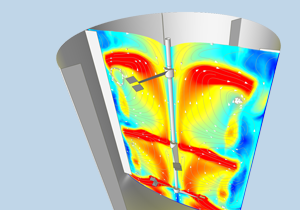
COMSOL® 仿真 App 开发、部署和应用
Webinar
Jul 18

Modeling Hydrogen Fuel Cells and Electrolyzers
Webinar
Jul 17

Modeling Magnetostrictive Material-Based Energy Harvesting Devices
Webinar
Jul 17

Concevoir des moteurs électriques performants avec COMSOL Multiphysics®
Webinar
Jul 11
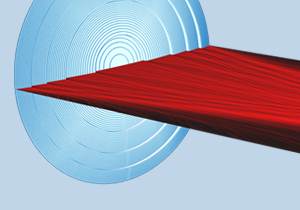
COMSOL® 中的光学仿真
Webinar
Jul 11
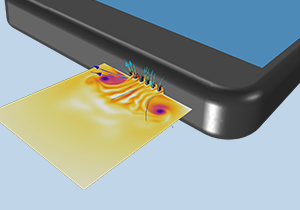
I nuovi orizzonti della simulazione acustica
Webinar
Jul 04

Multiphysics Simulation for Solar Energy Applications
Webinar
Jul 04
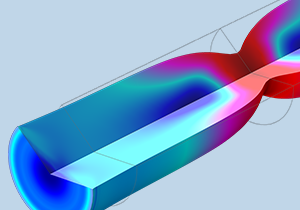
非线性结构材料参数估计
Webinar
Jul 04

Lightweighting in EVs with Multiphysics Simulation
Webinar
Jun 27

基于 COMSOL® 构建电力设备的数字孪生
Webinar
Jun 27
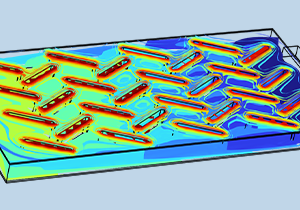
Optimizing Solar Collectors Using COMSOL Multiphysics®
Webinar
Jun 27

The Democratization of Multiphysics Simulation
Webinar
Jun 26

Performing Fatigue and Durability Analysis Using COMSOL Multiphysics®
Webinar
Jun 26

Comment accélérer vos Applications de Simulation avec des Modèles de Substitution
Webinar
Jun 25

Modéliser les Composants Électroniques avec COMSOL Multiphysics®
Webinar
Jun 20
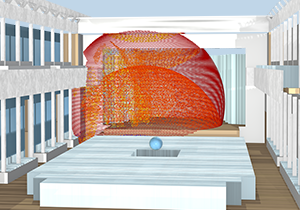
COMSOL® 室内声学仿真
Webinar
Jun 20

Simulare fenomeni termomeccanici
Webinar
Jun 18
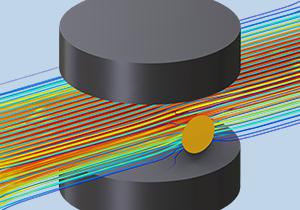
Simulating Current-Driven Magnetohydrodynamic Flows Using COMSOL Multiphysics®
Webinar
Jun 18
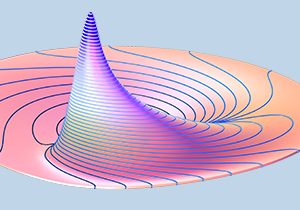
Thermal Modeling of Lasers in Manufacturing Processes
Webinar
Jun 13

Driving Innovation in EV Battery Design with Multiphysics Simulation Tools
Webinar
Jun 13

COMSOL Multiphysics® 在半导体制造中的应用
Webinar
Jun 13

Modeling MEMS Accelerometers Using COMSOL Multiphysics®
Webinar
Jun 06

Multiphysics modelling of photonic devices with COMSOL
Webinar
Jun 06

COMSOL Multiphysics® 在绿氢技术中的应用
Webinar
Jun 06

Modeling Corrosion and Corrosion Protection Systems with COMSOL Multiphysics®
Webinar
May 30

Comment Exploiter efficacement vos Résultats de Simulation avec COMSOL Multiphysics®
Webinar
May 30

Modeling Pharmaceutical Processes with COMSOL Multiphysics®
Webinar
May 29

使用 COMSOL Multiphysics® 模拟放电现象
Webinar
May 28

Modéliser les Dispositifs Électroacoustiques avec COMSOL Multiphysics®
Webinar
May 23

Modeling Electric Motors and Drivetrains
Webinar
May 22
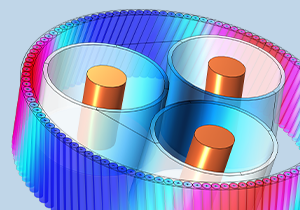
Modeling Cable Design & Power Electronics
Webinar
May 21
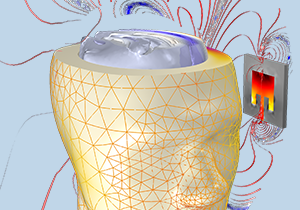
Digital twin e modelli surrogati: un passo verso il futuro
Webinar
May 21

Pioneering Sustainable Solar Technologies with COMSOL Multiphysics®
Webinar
May 21
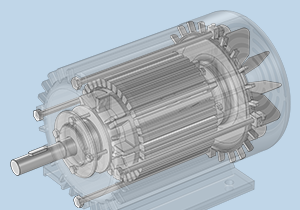
Modellare e gestire geometrie complesse
Webinar
May 16
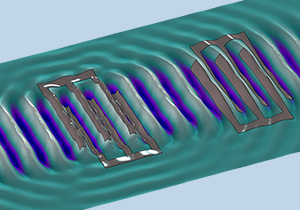
使用 COMSOL® 模拟 SAW/BAW 器件
Webinar
May 16
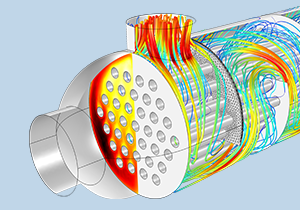
COMSOL® 中的换热器仿真
Webinar
May 09

The Basics of COMSOL Multiphysics® in 18 Minutes
Webinar
May 07

Simulating Thermal Effects in Power Electronics
Webinar
May 07

The Thermal Parameterisation and Modelling of Lithium-ion Batteries
Webinar
May 02
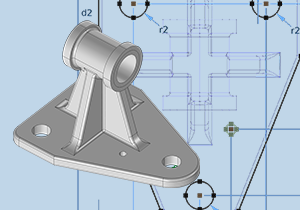
Comment construire efficacement sa géométrie avec le module Design
Webinar
Apr 25
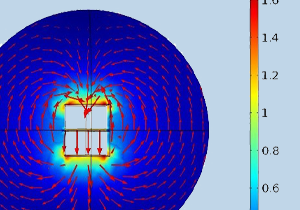
Designing a Novel Multimodal Piezoelectric Energy Harvester Using COMSOL Multiphysics®
Webinar
Apr 25
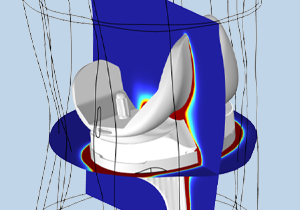
Electromagnetic Heating Simulation – Emerging Medical Applications
Webinar
Apr 24

Modeling Antennas and Wireless Charging for Electronic Devices with COMSOL Multiphysics®
Webinar
Apr 24

Battery Modeling Using Multiphysics Simulation
Webinar
Apr 23

Modeling Room Acoustics with COMSOL Multiphysics®
Webinar
Apr 18

COMSOL Multiphysics® 中的流固耦合仿真
Webinar
Apr 18

Additive manufacturing e simulazione: la chiave per l'innovazione
Webinar
Apr 17

Modéliser la Corrosion et les Systèmes de Protection contre la Corrosion avec COMSOL Multiphysics®
Webinar
Apr 16
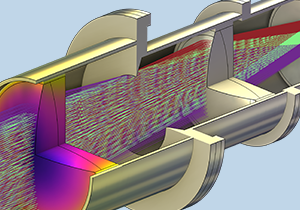
STOP Analysis with COMSOL Multiphysics®
Webinar
Apr 11

Acoustics Simulation for the Automotive Industry
Webinar
Apr 11
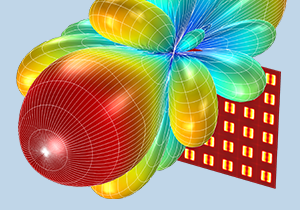
多尺度电磁波仿真
Webinar
Apr 11

COMSOL® 微执行器和微型电机仿真
Webinar
Apr 02
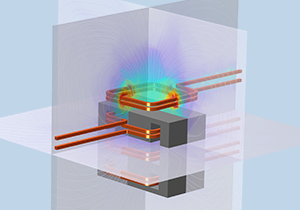
Modeling and Simulation of Power Electronics
Webinar
Mar 28

Advancing Future Energy Storage and Conversion Technologies with Simulation
Webinar
Mar 28
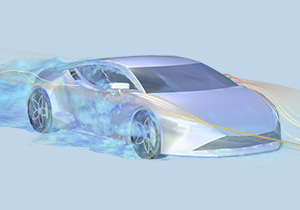
COMSOL® 中的湍流仿真
Webinar
Mar 26

Modeling Optical Nanostructures with COMSOL Multiphysics®
Webinar
Mar 21

Progettare motori elettrici più efficienti con la simulazione
Webinar
Mar 21

Comment construire un Maillage personnalisé dans COMSOL Multiphysics®
Webinar
Mar 21

Modeling Thermal Runaway and Abuse in Batteries
Webinar
Mar 21
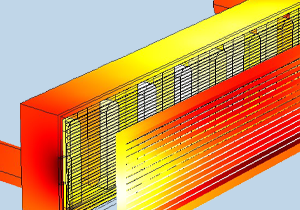
Designing RF Launchers for Nuclear Applications using COMSOL Multiphysics®
Webinar
Mar 20

Modeling Corrosion using COMSOL Multiphysics®
Webinar
Mar 15

Multiphysics Modeling of Electrical Motors
Webinar
Mar 14

Améliorer la Gestion Thermique des Batteries avec COMSOL Multiphysics®
Webinar
Mar 14

COMSOL® 仿真在电力电子技术中的应用
Webinar
Mar 14
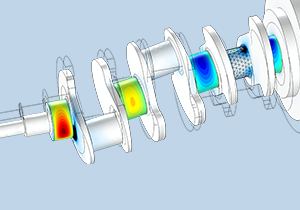
COMSOL® 中的流体动压轴承仿真
Webinar
Mar 12

使用 COMSOL Multiphysics® 模拟 EMI/EMC 现象
Webinar
Mar 07
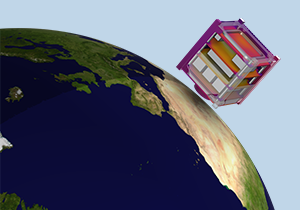
COMSOL® 中的热辐射仿真
Webinar
Mar 05

Training Surrogate Models to Build Faster Simulation Apps
Webinar
Feb 29

使用 COMSOL Multiphysics® 模拟 MEMS 加速度计和陀螺仪
Webinar
Feb 29

Simulare le tecnologie dell'idrogeno: dagli elettrolizzatori alle fuel cell
Webinar
Feb 20

Comment configurer le Solveur Temporel de COMSOL Multiphysics®
Webinar
Feb 20

Analyzing Spacecraft Thermal Performance with COMSOL®
Webinar
Feb 15
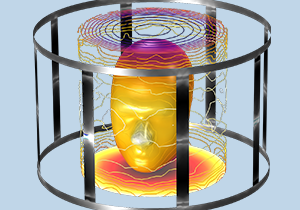
Modéliser les Dispositifs Médicaux avec COMSOL Multiphysics®
Webinar
Feb 15

Parameter Estimation for Nonlinear Materials
Webinar
Feb 08

The Basics of COMSOL Multiphysics® in 18 Minutes
Webinar
Feb 06

Simulare fenomeni di convezione
Webinar
Jan 30
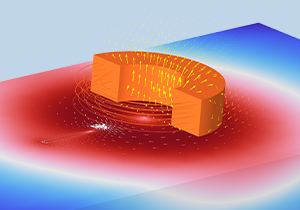
Modeling Eddy Current Inductive Sensors in COMSOL®
Webinar
Jan 25
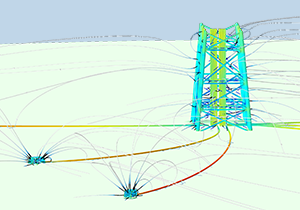
在 COMSOL Multiphysics® 中模拟腐蚀及防护系统
Webinar
Jan 25

Comment configurer le Solveur Stationnaire de COMSOL Multiphysics®
Webinar
Jan 23

Améliorer les Performances des Piles à Combustible et des Electrolyseurs avec COMSOL Multiphysics®
Webinar
Jan 18

Multiphysics Simulation for Solar Energy Applications
Webinar
Jan 18

使用 COMSOL® 模拟等离激元效应和超材料
Webinar
Jan 18
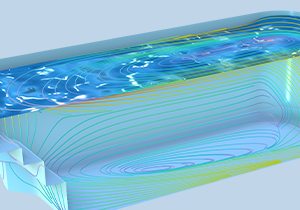
Cosa c'è di nuovo in COMSOL Multiphysics® 6.2
Webinar
Jan 16

半导体封装和测试中的多物理场仿真
Webinar
Jan 11
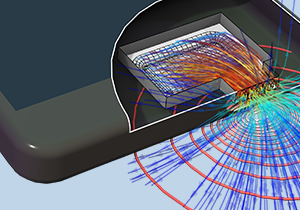
COMSOL® 中的扬声器和麦克风仿真
Webinar
Jan 04

使用 COMSOL Multiphysics® 进行结构-热-光学耦合分析
Webinar
Dec 21

Improving Electric Drivetrain Efficiency with Multiphysics Simulation
Webinar
Dec 15
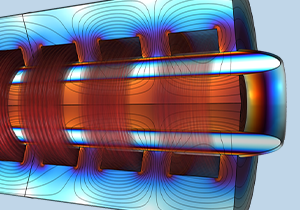
COMSOL® 多物理场仿真在电气绝缘中的应用
Webinar
Dec 05
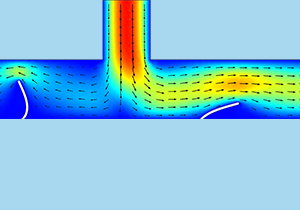
微流体器件的多物理场仿真
Webinar
Nov 30

半导体制造中的晶体生长仿真
Webinar
Nov 28

COMSOL® 多物理场仿真在医疗设备研发中的应用
Webinar
Nov 21

COMSOL® 中的网格划分
Webinar
Nov 16

锂离子电池热失控仿真
Webinar
Nov 14

COMSOL® 中的磁流体仿真
Webinar
Nov 09

COMSOL® 地下水流及多孔介质流仿真
Webinar
Nov 02

电磁噪声的仿真分析
Webinar
Oct 31

使用 COMSOL Multiphysics® 仿真 PVD/CVD 薄膜沉积工艺
Webinar
Oct 27

COMSOL® 多物理场仿真优化电缆设计
Webinar
Oct 20

COMSOL® 的求解器简介
Webinar
Oct 13
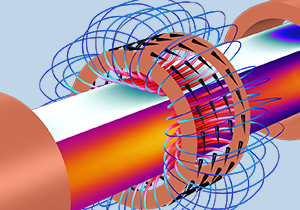
COMSOL® 中的感应加热仿真
Webinar
Sep 26
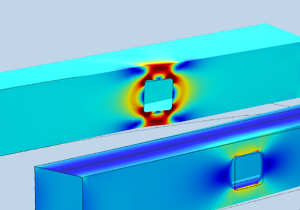
COMSOL® 中的岩土力学仿真
Webinar
Sep 19
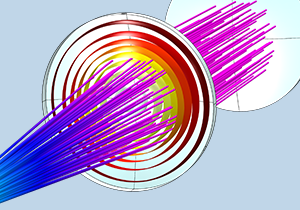
多物理场仿真在激光加工中的应用
Webinar
Sep 15

计算流体力学(CFD)多物理场仿真
Webinar
Sep 12

使用 COMSOL® 求解大型模型
Webinar
Sep 08

COMSOL® 中的声学超材料仿真
Webinar
Sep 05
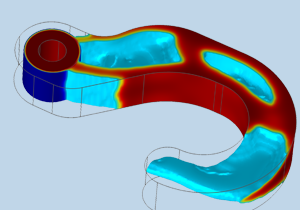
使用 COMSOL Multiphysics® 进行设计优化
Webinar
Sep 01

COMSOL® 的压电材料和器件仿真
Webinar
Aug 29

COMSOL® 中的变压器仿真
Webinar
Aug 25

COMSOL® 中的半导体器件仿真
Webinar
Aug 22
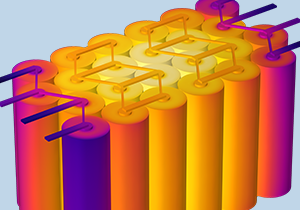
COMSOL® 中的锂电池仿真
Webinar
Aug 18
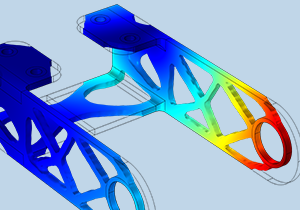
COMSOL® 的结构力学仿真
Webinar
Aug 15
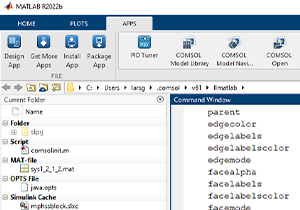
COMSOL® 中的 LiveLink™ for MATLAB® 和 LiveLink™ for Simulink® 功能简介
Webinar
Aug 11

电子设备热管理的仿真分析
Webinar
Aug 04
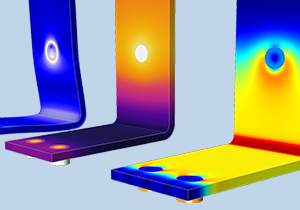
电磁损耗的仿真分析
Webinar
Jul 28

氢燃料电池与水电解槽的多物理场仿真
Webinar
Jul 25

COMSOL® 中的多相流仿真
Webinar
Jul 21
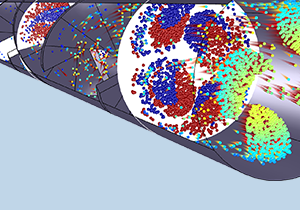
粒子追踪方法的建模仿真
Webinar
Jul 18

MEMS 器件的多物理场建模和仿真
Webinar
Jul 14

SAW 和 BAW 滤波器的建模仿真
Webinar
Jul 07

COMSOL® 中的电镀仿真
Webinar
Jul 04
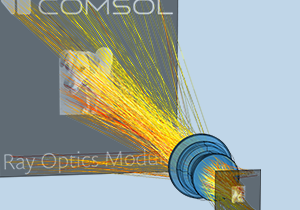
COMSOL® 中的射线光学仿真
Webinar
Jun 30

Warum Batterien modellieren?
Webinar
Jun 20

COMSOL® 中的热应力仿真
Webinar
Jun 16
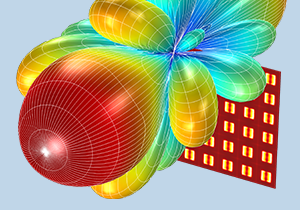
COMSOL® 中的高频电磁场仿真
Webinar
Jun 13

COMSOL® 中的流固耦合仿真
Webinar
Jun 09

Brennstoffzellen und Elektrolyseure modellieren in 18 Minuten
Webinar
Jun 06

COMSOL® 中的传热仿真
Webinar
Jun 06

COMSOL® 中的腐蚀与防护仿真
Webinar
Jun 02
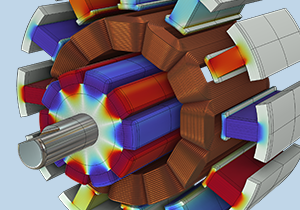
COMSOL® 中的低频电磁场仿真
Webinar
May 23

在 COMSOL® 中进行 CAD 导入及几何模型处理
Webinar
May 19
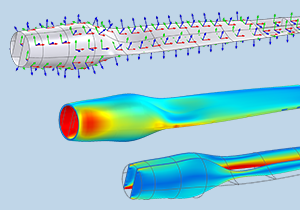
COMSOL® 中的复合材料仿真
Webinar
May 16
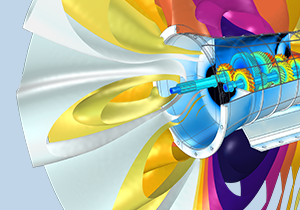
声学与振动的多物理场仿真
Webinar
May 12
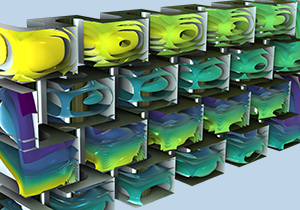
COMSOL® 化学反应工程仿真
Webinar
Apr 18

光学超材料仿真
Webinar
Apr 14
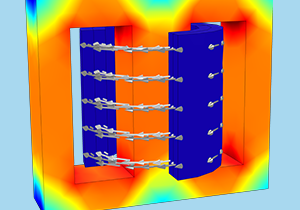
电力设备的多物理场仿真
Webinar
Apr 07
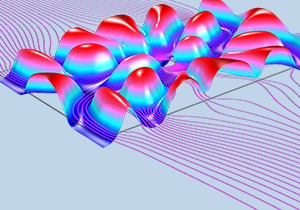
在 COMSOL® 中使用自定义函数建模
Webinar
Mar 31

COMSOL® 6.1 电磁模拟新功能
Webinar
Mar 24

COMSOL® 6.1 电池模块新功能
Webinar
Mar 17
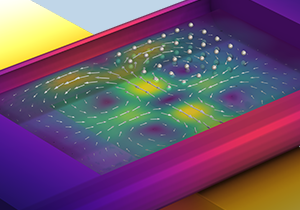
COMSOL® 中的声流仿真
Webinar
Mar 10

COMSOL Multiphysics® 波动光学仿真
Webinar
Mar 07
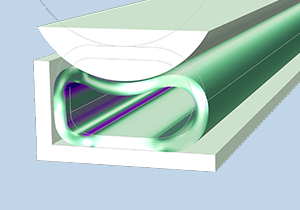
COMSOL® 6.1 结构力学模块新功能
Webinar
Mar 03
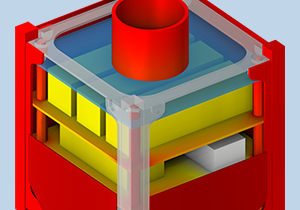
如何使用 COMSOL® 分析航天器热性能
Webinar
Feb 24

COMSOL® 6.1 模型管理器和 App 开发器新功能介绍
Webinar
Feb 17

COMSOL® 6.1 燃料电池和电解槽模块新功能
Webinar
Feb 10

COMSOL® 6.1 声学模块新功能
Webinar
Feb 03
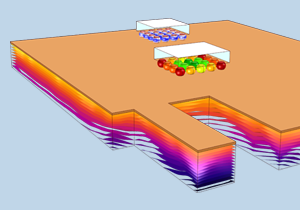
Best Practices for Results and Visualization
Webinar
Jan 18

在 COMSOL® 中基于方程进行建模仿真
Webinar
Jan 13
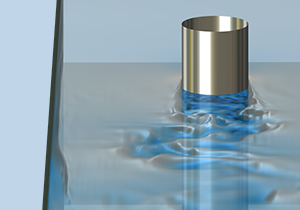
COMSOL® 6.1 CFD 模块新功能
Webinar
Jan 06

COMSOL LiveLink™ for MATLAB® 功能简介
Webinar
Dec 30
Showing 6 of 221 events
Showing 221 of 221 events
Trainings by Certified Consultants
- Product Information
- Products
- Specification Chart
- License Options
- System Requirements
- Release History
- Support and Services
- Support Center
- My Support Cases
- Knowledge Base
- Partners and Consultants
- Documentation
- Product Download
- Company
- About
- Careers
- Press
- Contact Us
- |
- Privacy Policy
- |
- Trademarks
- |
- Cookie Settings
- © 2024 by COMSOL. All rights reserved
